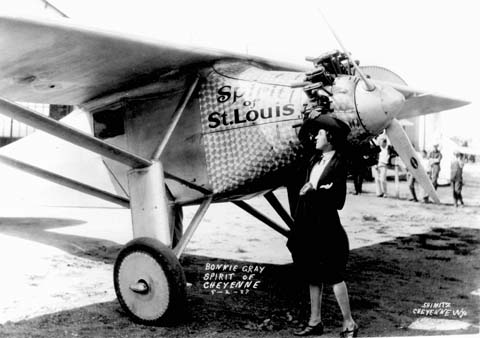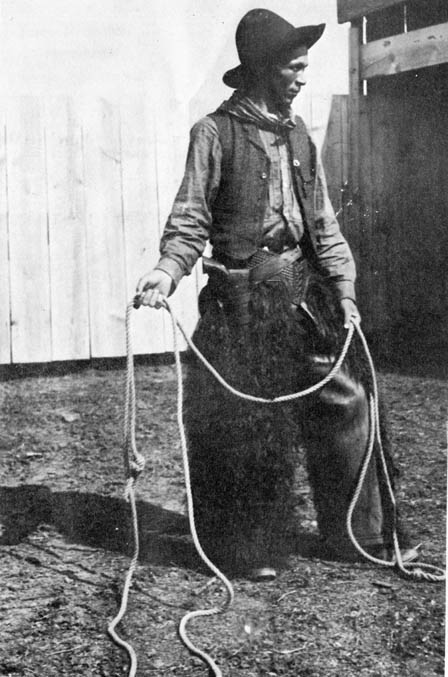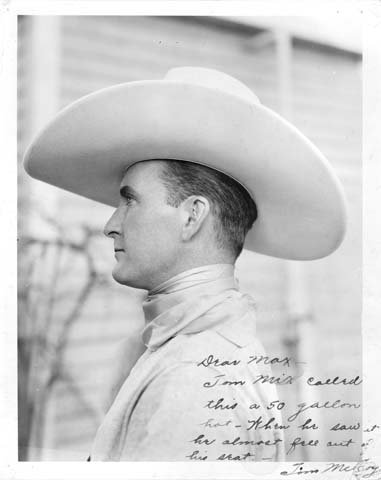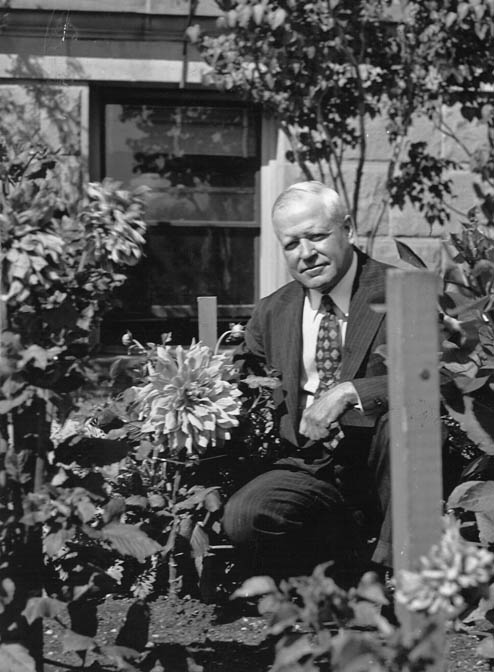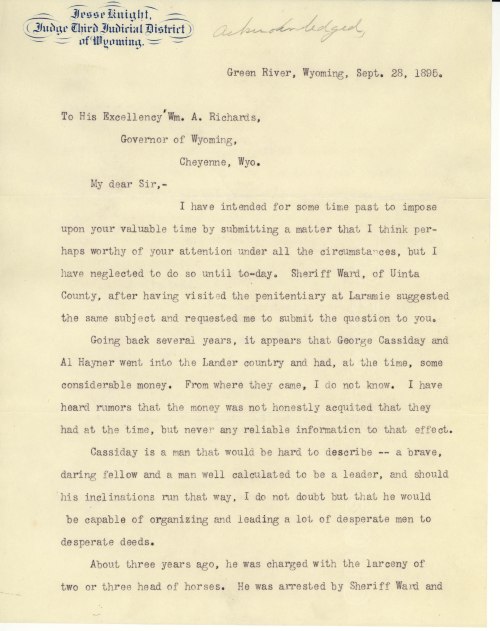
Uncle Sam was enlisted to promote the game. (Wyoming Tribune September 10, 1944)
75 years ago today, Wyoming became a part of NFL history. On September 10, 1944 the Brooklyn Tigers, a professional football team in the National Football League, played the Fort Warren Broncos at Cheyenne, Wyoming. The Broncos team was comprised of active duty servicemen stationed at Fort Warren (now Warren Air Force Base) during World War II. This game was the first and only time an NFL team played in the state of Wyoming during the league’s 100 year history.
Legendary sports announcer and commentator, and Wyoming native son, Curt Gowdy covered the game for the local Wyoming Eagle. He described the game as “[slated to be] a battle of the pros’ power and experience against the spirit and hustle of the quartermasters. It turned out just that way. A team that won’t be beat, can’t be beat.”[1]

The Warren Bowl was an large multi-use sports field on the east side of Fort Warren (beside what is I-25 today). The sunken oval track and infield were surrounded by wooden bleachers, which had been expanded for this game. The press box and radio room also received upgrades. (WSA Stimson Neg 4756, Warren Bowl, 1930 by J.E. Stimson)
The game kicked off at 2:00 P.M. at the Warren Bowl with 3,000 to 4,000 in the bleachers, including 1,200 Cheyenne civilians. Enlisted personnel attended for free, while civilians paid $1.75 or $2.75 admission.[2] The low turnout among Cheyennites was partially blamed on predictions that the professional team would steamroll the Broncos. Bronco coach Captain Willis M. Smith remained optimistic, proclaiming the Broncos would give a good showing against the professional team. [3]
The naysayers were correct, but for only one quarter of the game. The first quarter belonged to the Tigers. The Tiger’s offense routinely smashed through the Broncos’ defensive line allowing for long gains on the ground. After a 49-yard march down the field Tiger’s halfback Frank Sachse lateraled to star fullback Pug Manders who then plunged into the endzone from the 12 yard line. Kicker Bruiser Kinnard’s extra point kick was good. The first minute of the second quarter saw another Tiger score. Ray Hare broke through the Broncos’ defensive front for an easy score. Kinnard’s extra point was good and the Tigers were up 14 points on the Broncos.

The Broncos, in their new red, white, and blue uniforms, stand out against the Tiger’s black and orange. (WSA Wyoming Eagle September 12, 1944)
The Bronco defense settled down and dug in, not allowing the Tiger’s into the endzone through the rest of the second quarter and all of the third quarter. The Tiger’s offense did do some scoring of their own in the second and third quarters but penalties called the touchdowns back.
The fourth quarter opened with the Broncos still trailing the Tigers by two touchdowns. The Bronco offense came alive in the closing quarter of the game to score 21 unanswered points. The Tigers came back and scored a third touchdown in the final minute of the game. The Tiger kicker, Kinard, missed the extra point by sailing it high over the upright as the clock ticked to zero. If the game was played to college rules the kick would have been good, but professional rules stated the kick must go between the uprights. The final score was Broncos: 21 Tigers: 20. [4]
Bronco coach Captain Smith told the Wyoming Tribune after the game, “I am very pleased with the showing my team made. Everyone on the club who saw action did a remarkable job. The Tigers did everything we expected them to do and a little more.”
Brookly Tiger coach Pete Cawthorn lauded the tenacious Fort Warren Broncos. He told the Wyoming Tribune, “The Fort Warren team played a fine game after being behind two touchdowns. They made a swell showing and Captain Clifford Long (Bronco back) turned in an outstanding game… The credit shouldn’t go to any one Fort Warren player, however, as the entire Bronco team deserves credit equally for beating us.”
When asked if he could have changed anything about the game, Coach Cawthorn said he would have kept his starting line up in longer. “We probably took our first string out of the game too soon, early in the second quarter, but Fort Warren wasn’t to be denied.”
The 1944 season was the last season for the Brooklyn Tigers (whose name changed from the Brooklyn Dodgers in 1944.) Not surprising for a team in dead last with no wins during the regular season. Franchise owner Dan Topping announced he was joining the new All-America Football Conference, so the NFL canceled his franchise and merged the team with the Boston Yanks.[7]
The Fort Warren Broncos brought the confidence gained from beating the professional squad into their next game against University of Colorado at Boulder on September 23. The Broncos won this game 7-6. Despite ended the season with an average record of 5-4-1, this football club is rumored to lay claim to an extraordinary feat in football history: the Fort Warren Broncos are the only independent team to ever defeat a professional football team and a major college program in the same season. [7]
 In his post-game commentary, Gowdy asked what “intangible something” underdogs possess that enabled them to pull off the unexpected. “That intangible something is team spirit… That team spirit must originate within the players themselves” and be fostered by the coaches. Gowdy’s credit started at the top with the fort’s commanding officer Brigadier General H.L. Whittaker for fostering participation in team sports on base and continuing to the coaches, who he praised for preparing the team to tackle what he argued was “one of the toughest schedules in the entire nation.” He ended with lavish praise of the team themselves:
In his post-game commentary, Gowdy asked what “intangible something” underdogs possess that enabled them to pull off the unexpected. “That intangible something is team spirit… That team spirit must originate within the players themselves” and be fostered by the coaches. Gowdy’s credit started at the top with the fort’s commanding officer Brigadier General H.L. Whittaker for fostering participation in team sports on base and continuing to the coaches, who he praised for preparing the team to tackle what he argued was “one of the toughest schedules in the entire nation.” He ended with lavish praise of the team themselves:
To single out an outstanding player… would be doing an injustice to the Fort Warren eleven. They were jittery, out manned, and badly outplayed… and all fought together in one of the most perfect examples of team play you’ll ever hope to see. There were captains, lieutenants, enlisted men and players of different races hustling and winning side by side. Think that through. Isn’t that truly the democratic way of life?[8]
1. “Curt Comments”, Wyoming Eagle September 12, 1944 p12. Born in Green River in 1919, Curt Gowdy began his career in journalism covering sports for his high school newspaper. Graduating with a degree in journalism and 3 letters in both tennis and basketball, Gowdy enlisted in the Army hoping to become a fighter pilot. It was not to be and he was medically discharged from the Air Force in 1943. That year he began calling high school and local sporting events in Cheyenne and covering sports for the Cheyenne radio station and Wyoming Eagle newspaper while he recovered from back surgery. By 1945, he was in Oklahoma covering and calling minor league and college sports. His distinctive style got him a job with New York Yankees in 1949. In 1951, he began calling for the Boston Red Sox. During his over 30 years on the national stage, Gowdy covered professional and college games in both football and baseball, including several noteworthy moments and numerous post-season games in both sports. He also called all of the Olympic Games televised by ABC from 1964-1988 and hosted or narrated several television shows.
2. “Fort Warren Broncs Vs. Brooklyn Tigers”, Wyoming State Tribune September 10, 1944
3. “Tough Broncs Trim Brooklyn Pros, 21 to 20.” Wyoming State Tribune, September 11, 1944, p. 5
4. Ibid.
5. Ibid.
6. “NFL’s Brooklyn Dodgers.” Pro Football Hall of Fame https://www.profootballhof.com/news/nfl-s-brooklyn-dodgers/ (retrieved May 2019)
7. “Curt Comments”, Wyoming Eagle September 12, 1944 p12.
8. This claim is not corroborated. We would love to hear from anyone with more information.


